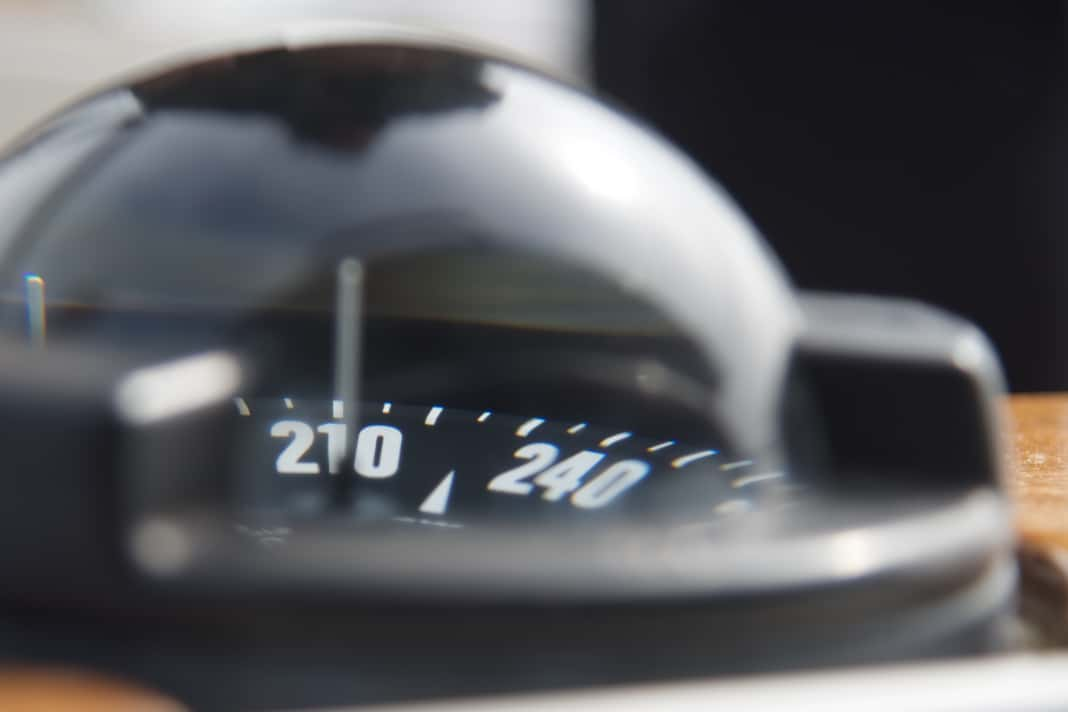





The article series
- Encoders should therefore be adjusted
- Adjusting and calibrating the compass
- Setting the echo sounder
- Check log
- Adjusting the wind sensor
Although the magnetic compass is available everywhere, it still leads a shadowy existence and often only serves as a straight-ahead reference for the helmsman. Most skippers accept the fact that the rose often deviates by more than 15 degrees from the values from the GPS or bearing compass as a matter of course - hardly anyone is able to answer the question of the exact value of the deviation on the individual courses. However, regular compass checks and the availability of an up-to-date deviation table or curve are required by law.
By the way: A hand-held compass can also provide good service on board, whether for navigation, checking the approach of other vehicles or as a back-up for the steering compass. We have thoroughly tested seven bearing compasses. This revealed clear differences in practical suitability.
Checking the magnetic compass
There are countless methods for checking the compass in practice, including various methods that use the easy-to-read course over ground from the GPS as a reference instead of a complex land bearing. Turning the yacht around a wooden dolphin while simultaneously taking a reference bearing using a bearing disc has proven to be a good method, resulting in a deviation table.
Create deviation table
Checking the mechanical compass is a lot of work. This requires a wooden pole around which the ship can turn. You also need an object with a known bearing. The distance to the bearing object should be at least one mile.
With a bearing disc aligned exactly to the midship line, the bearing to the object is now taken and the boat is turned 360 degrees step by step. The right bearing to the object is corrected by the deviation taken from the chart to the wrong bearing and noted (MwP = RwP -Mw). This is followed by the actual compass check, for which the ship is turned in steps of 30 degrees according to the magnetic compass to be checked. Each time, the bearing disc is used to determine the bearing to the right and the bearing to the left (MwK = MwP - SP) and this is noted in a table together with the compass heading read off. This is done once clockwise and once anti-clockwise and the deviation between the rounds is then averaged.
To convert courses using the deflection table created in this way, steps of 10 degrees would be necessary. Instead of making such a large measurement effort, a deflection curve is generated using a spreadsheet. The installation error of the compass, i.e. its deviation from the heading, is automatically recorded in the deflection table; the deviation from the nautical chart, on the other hand, must not be included.
Calibrating the electronic compass
If you have a chart plotter with radar overlay, you will quickly recognise when the fluxgate is no longer working properly from the deviations in the image. Errors of just one degree are already noticeable here.
On the other hand, compensating a fluxgate compass, for example from the autopilot, is much easier and faster than with a magnetic compass. All you need to do is turn the ship in a circle as evenly as possible, i.e. lock the rudder and do not adjust the throttle. The process works most reliably if the actual routine on the instrument is only started when the ship is already travelling in a constant circle. Depending on the system, one or more circles may need to be turned until the process is complete. Current offset does not matter as long as the ship is not turned by vortices. The curls do not have to be exact circles over the ground, it is only a matter of turning evenly. This is because the electronics determine the deviation based on the rate of rotation. However, strong winds are a hindrance.
The heading must then be adjusted manually, for example using a known bearing.
Tip from the editors: Have you got a taste for classic navigation? In this series of articles you get all the knowledge you need on the water.
The article series
- Encoders should therefore be adjusted
- Adjusting and calibrating the compass
- Setting the echo sounder
- Check log
- Adjusting the wind sensor

